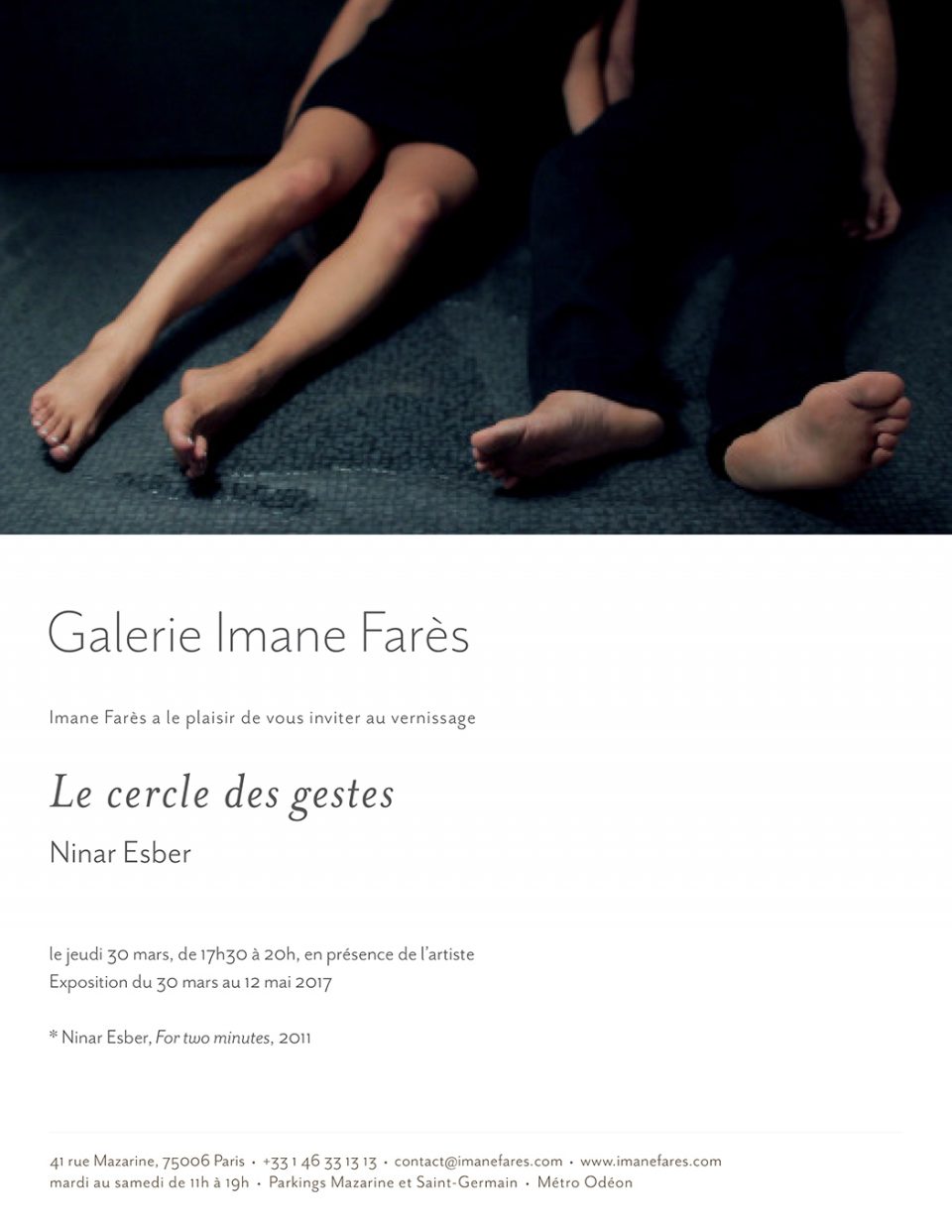
Le Cercle des gestes
How difficult it is, when looking at the large white sheets on which Ninar Esber draws what one believes to be figures – one believes it only because they are imperfect, shaky, enigmatic – to avoid thinking of the myth of Dibutades’s daughter : as the man loved by the young girl had to leave for a long journey, she wanted to keep an image of him and so marked out the outline of his projected shadow on a wall.
If Ninar’s gesture revives the art of drawing, it is simultaneously shifts away from it very sigificantly. Her drawing did not attempt to capture shadows, but real bodies, those of friends who played along huddled together on the sheets, and against whom her hand holding the felt pen brushed.
The hesitations that one guesses, the touching up also, are proof of this proximity between the artist and her « models », and the restraint, the modesty that it may order.
The Puzzled spectator soon understands that the shapes do not relate to bodies but rather to the space between them, a gap often marked by a stretch of color. In fact, the artist’s intention is not to keep the people’s inevitably incomplete trace, but on the contrary to emphasize the empty space they leave behind, as when long afteer having parted from someone you remember not so much his features as the objects that used to surround him or the light that used to shroud his face.
It ought to be stated that the execution of the drawing took place on the sheet, which was spread out across the floor, the « models » lying on it. Therefore their attitudes were not those of people ready to make a move, but of bodies in a state of abandonment. In this position minds grow apart, however close the bodies may be. Even lovers sharing a bed know that once their bodies go to rest, each one will drift away from the other when entering their own dream.
In my opinion, one of the videos holds the key to these works. It shows two bodies, or rather the legs of two bodies, that of a woman and that of a man, lying in more or less the same position as the « models » on the sheets except they are resting on a bluet ile floor. They lie motionless, and one needs to pay attention to notice the water beginning to invade the space between them, then between their legs.
Ninar Esber was born in Lebanon, a country she had to leave for France whilst still a teenager. She knows what leaving means. Nowadays she splits her time, splits herself between two countries. These bodies are like two continents that the strech of water separates and unites at the same time.
A number of drawings on paper complement the exhibition. Each one of these was executed during a fixed length of time, from one to thirteen hours, and the series is called Drawing a line. This simple gesture repeated again and again produces surprising crystallizations that look like those used for making « dreamstones ». Just as water invades the space between lands, and as color makes visible the space between the others and oneself, which we would rather not notice, imagination must fill the duration of separation, of waiting.
Catherine Millet, 2017
Writer, editor-in-chief of Art Press and curator.